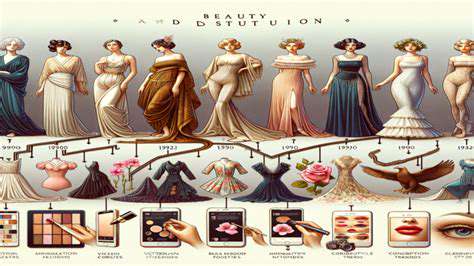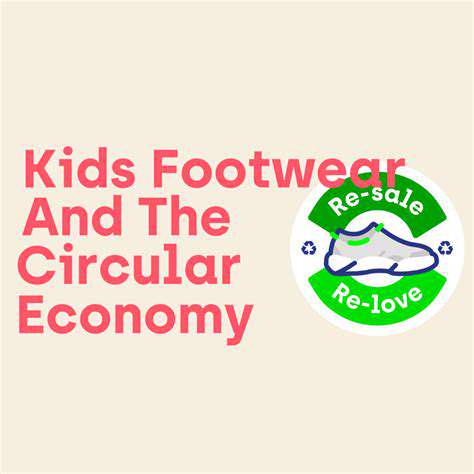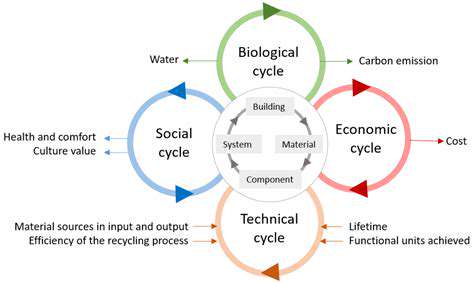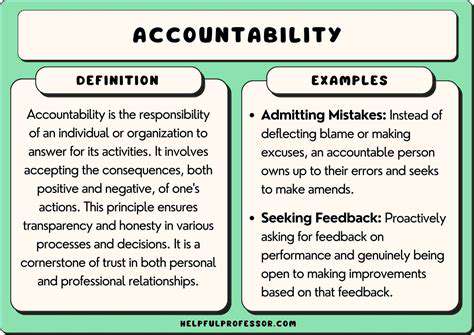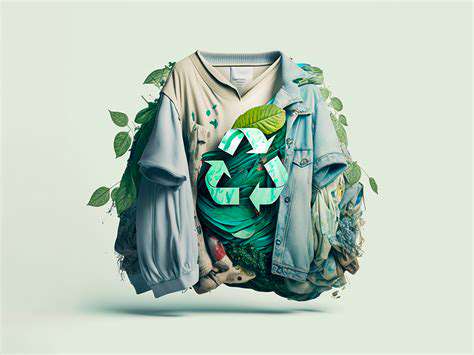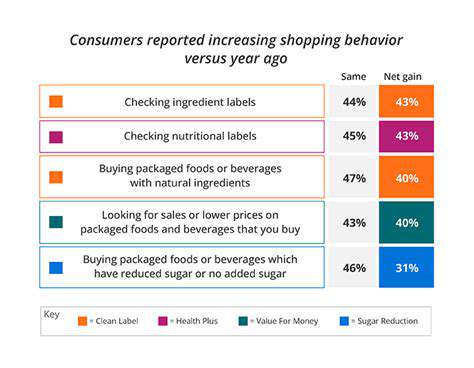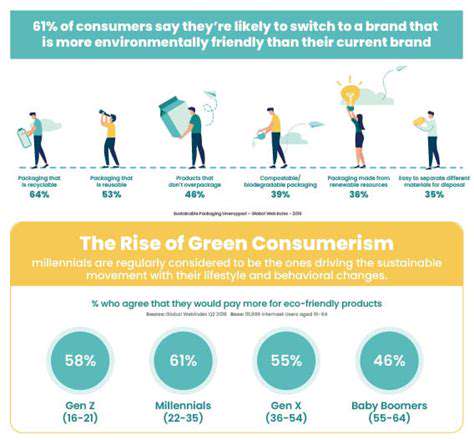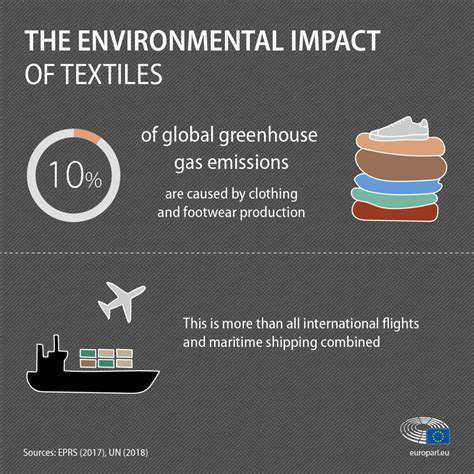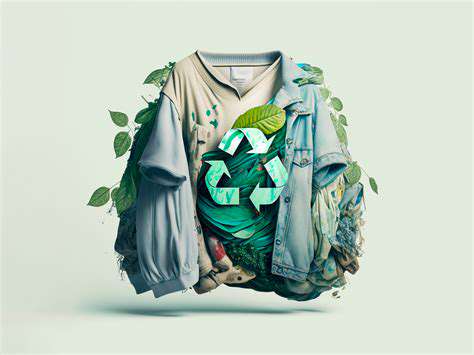Circularity and the Sharing Economy in Fashion
Circular fashion models represent a radical departure from the traditional take-make-dispose linear model that has characterized the industry for decades. These models focus on minimizing waste, maximizing resource utilization, and extending the lifespan of garments. Key components of circular fashion include the reuse and repurposing of existing materials, the development of durable and repairable products, and the implementation of closed-loop systems where garments are collected and transformed into new materials or products.
Implementing circular fashion models requires a significant shift in the industry's mindset and infrastructure. It demands collaboration between designers, manufacturers, retailers, and consumers. From designing clothing with recyclability in mind to developing innovative technologies for textile recycling, the industry must embrace new approaches to sustainable practices. The development of effective recycling systems and the promotion of clothing rental and repair services are critical components of this paradigm shift.
The Sharing Economy: Empowering Consumers and Businesses
The sharing economy is playing an increasingly vital role in the transition towards sustainable fashion practices. Platforms that facilitate the renting, swapping, and reselling of clothing empower consumers to access a wider range of styles and reduce their environmental footprint. By extending the life cycle of garments, these platforms contribute to a more circular fashion system. Consumers benefit from cost savings, access to unique items, and a reduced reliance on disposable fashion. Simultaneously, businesses can create new revenue streams by offering rental services or collaborating with platforms that facilitate secondhand markets.
The sharing economy also fosters a sense of community and collaboration within the fashion industry. By promoting the sharing and reuse of existing resources, it reduces the need for constant production and consumption. This collaborative approach benefits not only the environment but also fosters a more sustainable and equitable fashion system, where resources are valued and utilized responsibly.
Circular Fashion: Redefining the Garment Lifecycle
Circular Fashion: Design for Disassembly
Circular fashion, at its core, necessitates a fundamental shift in the way garments are designed and manufactured. Moving beyond the traditional make, use, dispose model, designers and manufacturers are embracing principles of durability, repairability, and recyclability. This involves the use of sustainable materials, such as organic cotton and recycled fibers, and construction techniques that facilitate disassembly and component reuse. Circular fashion design isn't just about the materials; it's about the entire lifecycle, from initial concept to end-of-life management, ensuring that garments can be broken down into their constituent parts for reuse or recycling, minimizing waste and maximizing resource efficiency.
A key element of this design for disassembly approach is the use of standardized components and modular designs. This allows garments to be easily taken apart and the individual parts repurposed in new creations. The use of readily available and recycled materials, coupled with the integration of smart technologies, plays a vital role in ensuring the longevity and value of clothing items. This approach is not only environmentally beneficial but also enhances the value proposition for consumers seeking durable, sustainable, and ethically produced garments.
The Sharing Economy and Extended Producer Responsibility
The sharing economy offers a powerful platform for circular fashion to flourish. Platforms that facilitate the rental, resale, and repair of clothing items connect consumers with pre-owned garments, reducing the demand for new production and extending the lifespan of existing clothing. This model not only reduces textile waste but also promotes a more conscious and mindful approach to consumption. Furthermore, the sharing economy can empower individuals to become active participants in the circular fashion movement, fostering a sense of community and shared responsibility for the environment.
Complementing this sharing economy approach is the concept of Extended Producer Responsibility (EPR). EPR holds manufacturers accountable for the entire lifecycle of their products, including end-of-life management. This shifts the responsibility from consumers to producers, encouraging them to design for recyclability, repairability, and reuse. By implementing EPR policies, governments can incentivize sustainable practices and drive innovation in the fashion industry, creating a more circular system that benefits both the environment and the economy.
Furthermore, EPR policies can promote investment in recycling infrastructure and technologies. This creates a more robust and sustainable system for managing textile waste, minimizing environmental impact, and maximizing the value of recycled materials. This interconnected approach to circular fashion, combining design for disassembly and the sharing economy with EPR policies, creates a powerful synergy for a truly sustainable fashion future.
The integration of technology into these systems further enhances the circular economy. Apps and platforms that track the origin and journey of garments can inform consumers about their environmental impact and promote transparency throughout the supply chain. This increased transparency can build consumer trust and encourage responsible consumption.
By embracing these interconnected strategies, the fashion industry can move beyond a linear model of production and consumption, creating a more sustainable and resilient future for all.
The Sharing Economy: Collaborative Consumption in Fashion
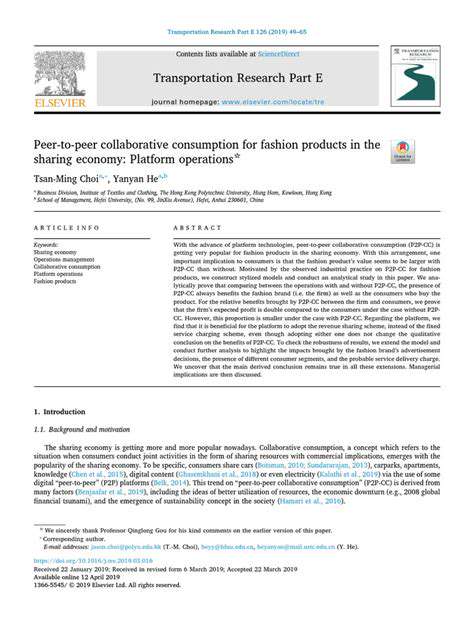
The Rise of Collaborative Consumption
The sharing economy, characterized by the collaborative consumption of goods and services, has experienced explosive growth in recent years. This shift represents a fundamental change in how we interact with resources, moving away from individual ownership towards shared access and utilization. This evolution is driven by a desire for reduced costs, increased sustainability, and a more efficient use of resources.
Key Drivers of the Sharing Economy
Several factors contribute to the popularity of the sharing economy. These include a growing desire for flexibility and convenience, coupled with a rising interest in environmental sustainability. The ability to access goods and services on demand, often at a lower cost than traditional options, significantly appeals to consumers. Furthermore, the sharing economy fosters a sense of community and connection among users.
Impact on Traditional Industries
The emergence of the sharing economy has presented both challenges and opportunities for traditional industries. Businesses accustomed to a model of individual ownership and direct sales face the need to adapt to a more collaborative and access-based approach. For example, car rental companies must now contend with ride-sharing services, and hotels are challenged by platforms facilitating short-term rentals. However, many traditional industries have successfully integrated aspects of the sharing economy into their operations, creating new revenue streams and improving customer experiences.
Technological Advancements and the Sharing Economy
Technology plays a crucial role in enabling the sharing economy. Platforms like Airbnb, Uber, and TaskRabbit facilitate the connection between providers and consumers, streamlining the process and expanding the reach of these services. The development of mobile apps and online marketplaces has made it easier than ever to participate in and benefit from collaborative consumption models.
Sustainability and the Sharing Economy
The sharing economy can have a positive impact on sustainability by reducing waste and promoting resource efficiency. By enabling the sharing of existing resources, the sharing economy minimizes the need for new production and consumption. This approach can contribute to a more environmentally conscious society, reducing the environmental footprint associated with traditional consumption patterns.
Challenges and Concerns
Despite the numerous benefits, the sharing economy isn't without its challenges. Issues such as regulation, safety, and the potential for exploitation need careful consideration. Ensuring fair compensation for providers and protecting consumers from fraud are crucial aspects of navigating the complexities of this new economic paradigm. Furthermore, the impact of the sharing economy on traditional employment models warrants ongoing analysis and discussion.
The Future of the Sharing Economy
The sharing economy is constantly evolving, adapting to changing consumer needs and technological advancements. The future likely holds further integration of the sharing economy into various aspects of daily life, from transportation and accommodation to skills and expertise sharing. We can anticipate even more innovative approaches to collaborative consumption, creating new opportunities for both individuals and businesses.
